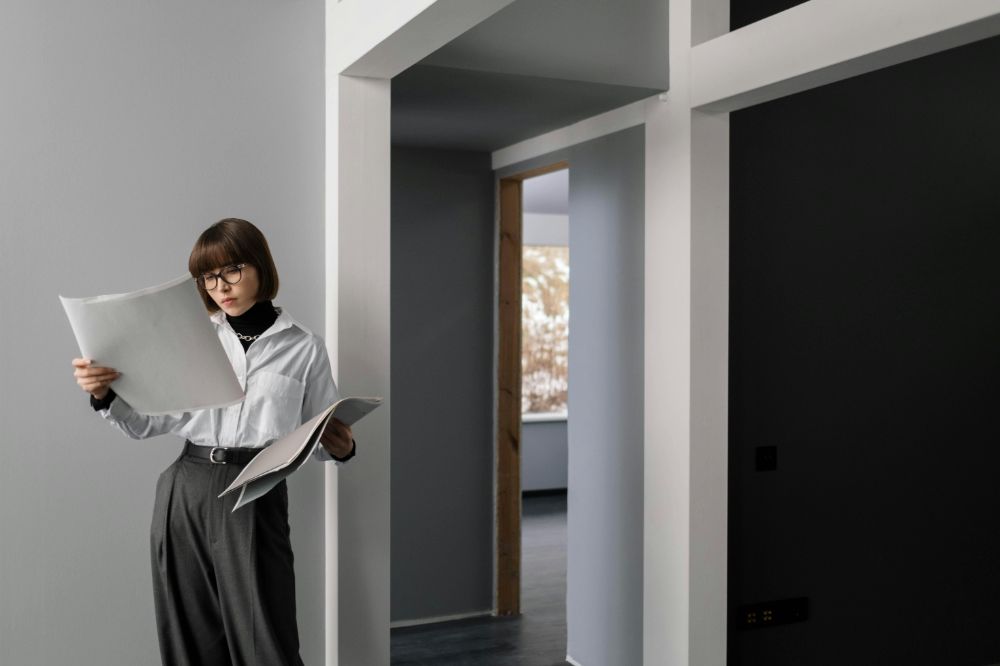Most people dream about their perfect home but forget to plan how each room will work day after day. Many new homeowners rush into floor plans and regret it later. However, taking time to design a floor plan that actually works for your life means fewer headaches and expensive changes down the road. So, think about morning routines, busy evenings, and future needs before picking walls or windows. In other words, the right layout should support real life, not just look pretty on paper. A smart plan feels comfortable and makes chores easier. So, start early, ask the right questions, and enjoy a home that truly fits every part of daily life.
Notice Daily Patterns First
Look at daily habits before planning any walls or rooms. Note how mornings start and evenings wind down. Think about where clutter builds up fast. Use smart construction techniques for maximizing space where it matters most: place doors, hallways, and storage to match real routines. Kids, guests, and work-from-home spots all shape what works best. Focus on what happens every day. A good plan comes from these small details that shape comfort and flow.

Put Use Before Style
Pretty layouts often fail if daily needs come last. Rooms must support real tasks and comfort first. So, place furniture on paper before the walls lock-in. Test where doors open and how people move. Trends fade fast, but the smart flow stays helpful for years. Also, check each spot for enough walking space and easy access. Good design comes when form follows function every time. Skip fancy shapes if they steal valuable square footage from daily living.
Design a Floor Plan That Actually Works for Your Life: Create Smart Zones and Storage
Divide your layout into clear zones for relaxing, working, and having fun. Keep noisy spots like living rooms or game areas away from bedrooms so you sleep better. Make sure your kitchen connects easily to dining and pantry areas to cut down on wasted steps.
Plan each closet and shelf early so clutter doesn’t pile up later. Use hidden cabinets and built-ins to open up more floor space. Add baskets, hooks, and benches where daily mess usually gathers, like near the entryway or in hallways. Look for extra storage under stairs or behind doors.
Bring in plants, hang art, and clean your new home from top to bottom to make it cozy without feeling crowded. Every corner should serve a purpose and add comfort. This way, you’ll have a home that’s easy to tidy up and truly supports your daily life.
Map Out Easy Paths
Keep in mind that good homes feel open because people move without bumps. Plan clear paths between rooms for smooth steps. Place doors where traffic flows best and avoid sharp turns. To design a floor plan that actually works for your life, check how daily steps cross each space. Busy kitchens and main entrances need wide paths for safety and ease—small changes like shifting a door save time later. Keep walkways open, simple, and free from clutter traps.

Bring in Natural Light
Bright spaces lift moods and open up small rooms fast. So, place windows where sunlight reaches most of the day. Face living areas toward the sun and skip dark corners when possible. To create your dream home, plan wide windows in the spots that are used the most. Add skylights or glass doors for extra daylight when walls feel tight. Good light cuts energy bills and brings warmth to daily tasks. Use mirrors to bounce light deeper inside darker corners. Choose light-colored walls to spread daylight further. Think about shade, too, so the hot sun does not overheat rooms. Smart light keeps a home fresh all year. Bright rooms feel bigger, calmer, and easier to enjoy from morning to night. Small touches with windows and clever design choices help natural light work well without extra cost.
Plan, Test, and Listen
Smart choices today protect comfort tomorrow. Cover these steps before any walls go up:
- Plan for change: Pick layouts that adjust as life grows. Extra rooms can switch roles over time. A home office today might become a playroom or guest room later.
- Test ideas early: Try simple 3D tools to spot tight corners and tricky spots before the building starts. Walk through the plan on screen and fix what feels off.
- Ask for input: Talk with everyone sharing the space. Different needs shape better rooms and smoother days. Kids, guests, or pets add special needs that matter.
Stay open to small tweaks. Listen to fresh ideas and shape rooms that feel right for daily living. Build in room for surprises, and comfort stays strong for years.
Work With Experts, Stay Involved
Good help turns ideas into smooth plans. Bring in a pro who understands daily needs and strong layouts. Stay active in every step to catch small fixes early. Small choices matter, like choosing the right flooring for busy spots or cozy corners. Talk through plans before final drafts lock-in. Good pros listen and guide without pushing trends that do not fit. Stay open, but trust real needs first. Strong teamwork shapes a home that feels right every day.
A Home That Fits Real Life
Building or buying a new place feels exciting until problems pop up because the layout does not match daily habits. It pays off to design a floor plan that actually works for your life, from the first coffee to bedtime. Smart planning keeps life flowing without bumps. Enough storage, easy walkways, and sunny spaces can change how each day feels. Good design should grow with family needs and bring comfort for years. Small choices today help avoid stress tomorrow. Take time to think it through and build a space that feels right every single day.





